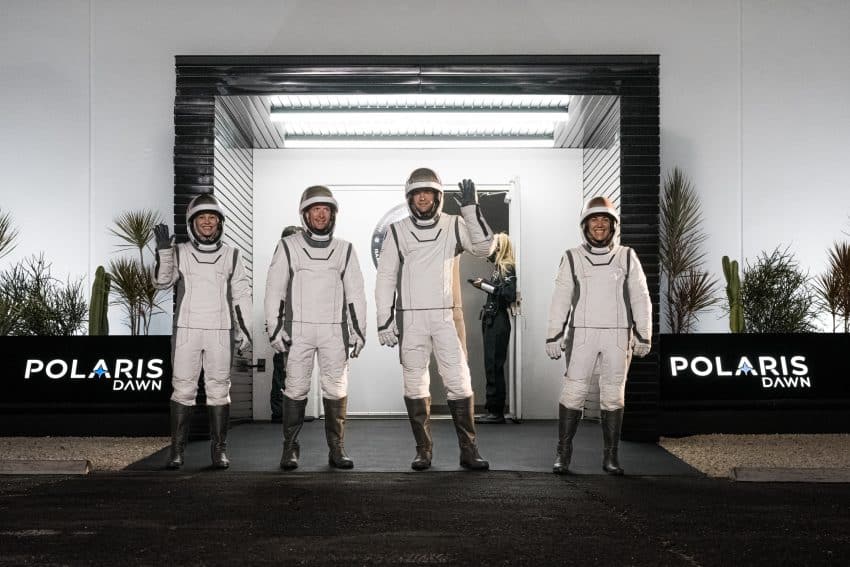SpaceX’s Polaris mission, scheduled for launch on the evening of August 26th PST or the early morning hours of August 27th EST, promises to be a groundbreaking event in space exploration history. The launch will take place from the iconic Kennedy Space Center, marking the significant achievement of traveling 870 miles into space, the furthest humans have ventured since the Apollo missions.
One of the most captivating aspects of the Polaris mission is its diverse crew of four exceptional individuals who have undergone rigorous training to prepare for this extraordinary journey. Jared Isaacman, the mission commander, is a successful entrepreneur, accomplished pilot, and major donor to St. Jude Children’s Research Hospital. Isaacman not only founded Shift4 Payments, a payment processing company that handles payments for a third of America’s restaurants and hotels, he also founded Draken International, the world’s largest private air force. Sarah Gillis, a vital member of the SpaceX engineering team, brings her expertise and dedication to the mission. Anna Menon, a highly skilled Lead Space Operations Engineer at SpaceX, will play. Scott Poteet, a retired United States Air Force lieutenant colonel, adds his extensive experience and leadership to the team.
The Polaris mission will conduct over 30 diverse experiments, pushing the boundaries of scientific knowledge. These experiments range from collecting data from the edge of space to better understand our planet to preparing for life on other planets. One of the most captivating experiments involves billionaire Jared Isaacman testing a cutting-edge Extravehicular Activity (EVA) suit during a spacewalk, demonstrating the suit’s capabilities and paving the way for future spacewalks.
Other experiments include measuring high-energy neutron radiation to enhance models that predict radiation exposure, vital for planning safer deep space explorations; developing CPR techniques that work in space; using fiber optic cameras to study how fluids behave in a body in space; and mapping post-flight brains to better understand vision problems. The crew will also be testing gadgets like continuous glucose monitors in space, which could mean that even those with medical conditions might get a ticket to ride in the future, as well as 3D printers, better flushers, and robots. Additionally, the crew will be testing laser technology to reduce satellite internet latency and conducting farming techniques, material science tests, medical tests, and experiments involving quantum entanglement for communication and testing artificial gravity.
Targeting Tuesday, August 27 for launch of Polaris Dawn, the first of the @PolarisProgram’s three human spaceflight missions designed to advance the future of spaceflight pic.twitter.com/w6QF3jBLqt
— SpaceX (@SpaceX) August 21, 2024
The Polaris mission holds immense significance as it showcases the extraordinary capabilities of humanity’s unwavering curiosity and determination to conquer the vastness of space. As the first mission since Apollo to venture deep into space with human astronauts, Polaris promises to be a spectacle that captivates audiences worldwide, inspiring future generations to dream big and reach for the stars.
You can watch it here:
All systems are looking good for tomorrow’s Falcon 9 launch of Polaris Dawn. Webcast will go live ~3.5 hours ahead of liftoff on Tuesday, August 27 → https://t.co/WpSw0gzeT0 pic.twitter.com/81xlzKZ9VV
— SpaceX (@SpaceX) August 26, 2024


.png)